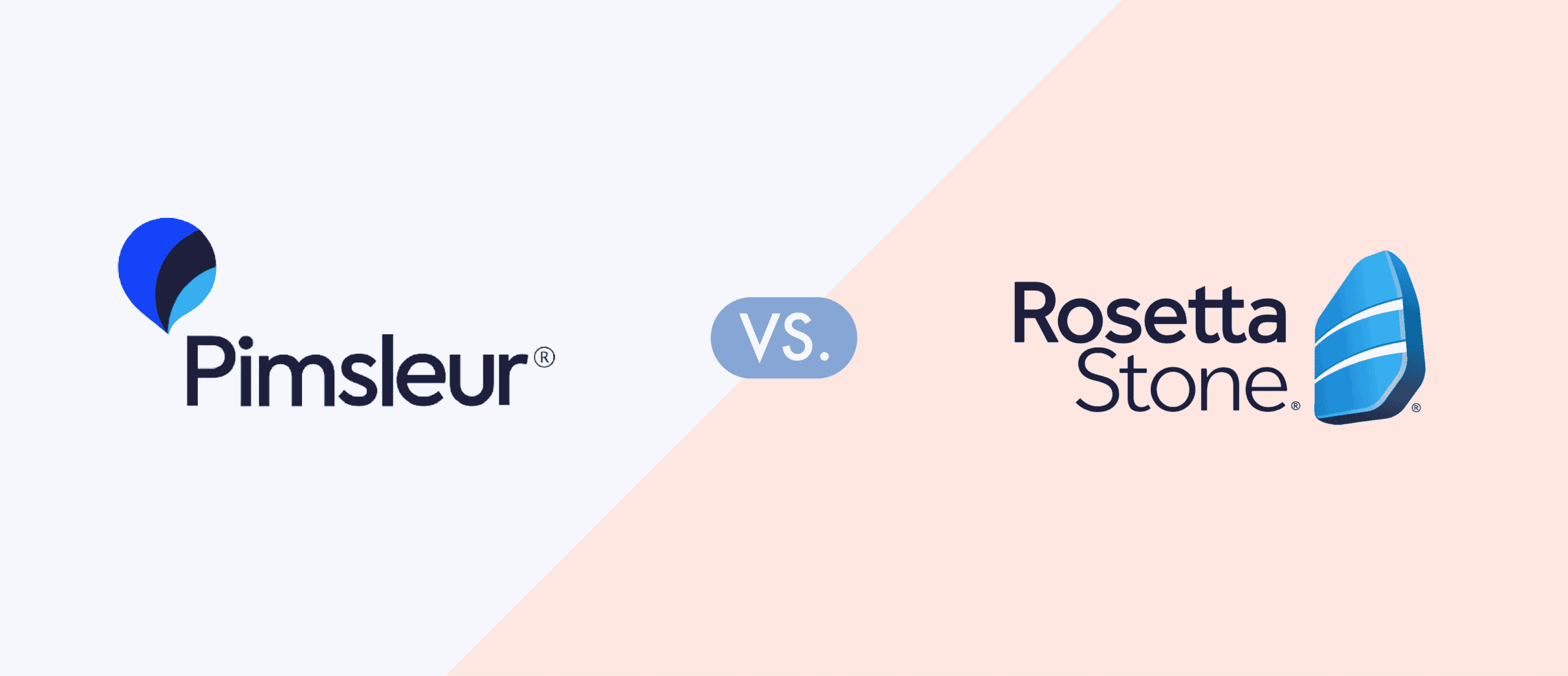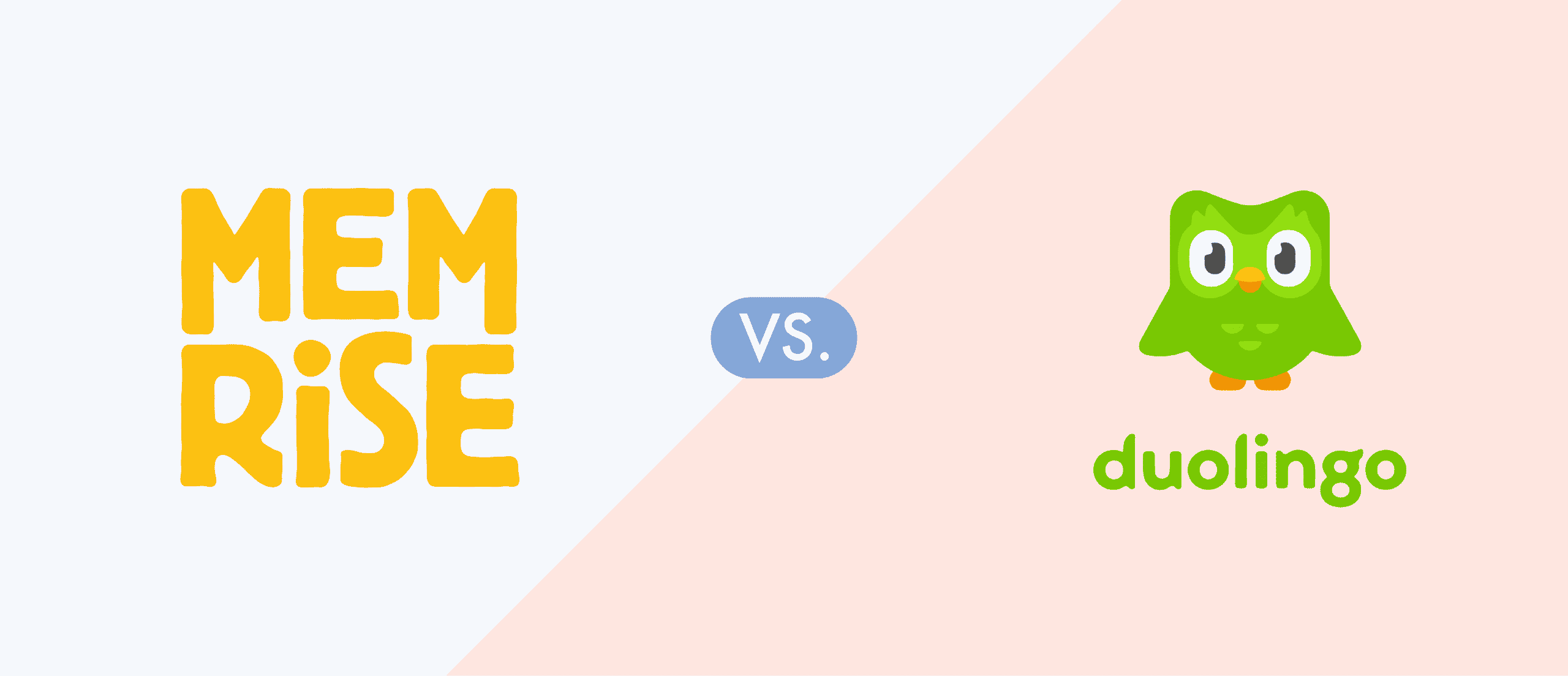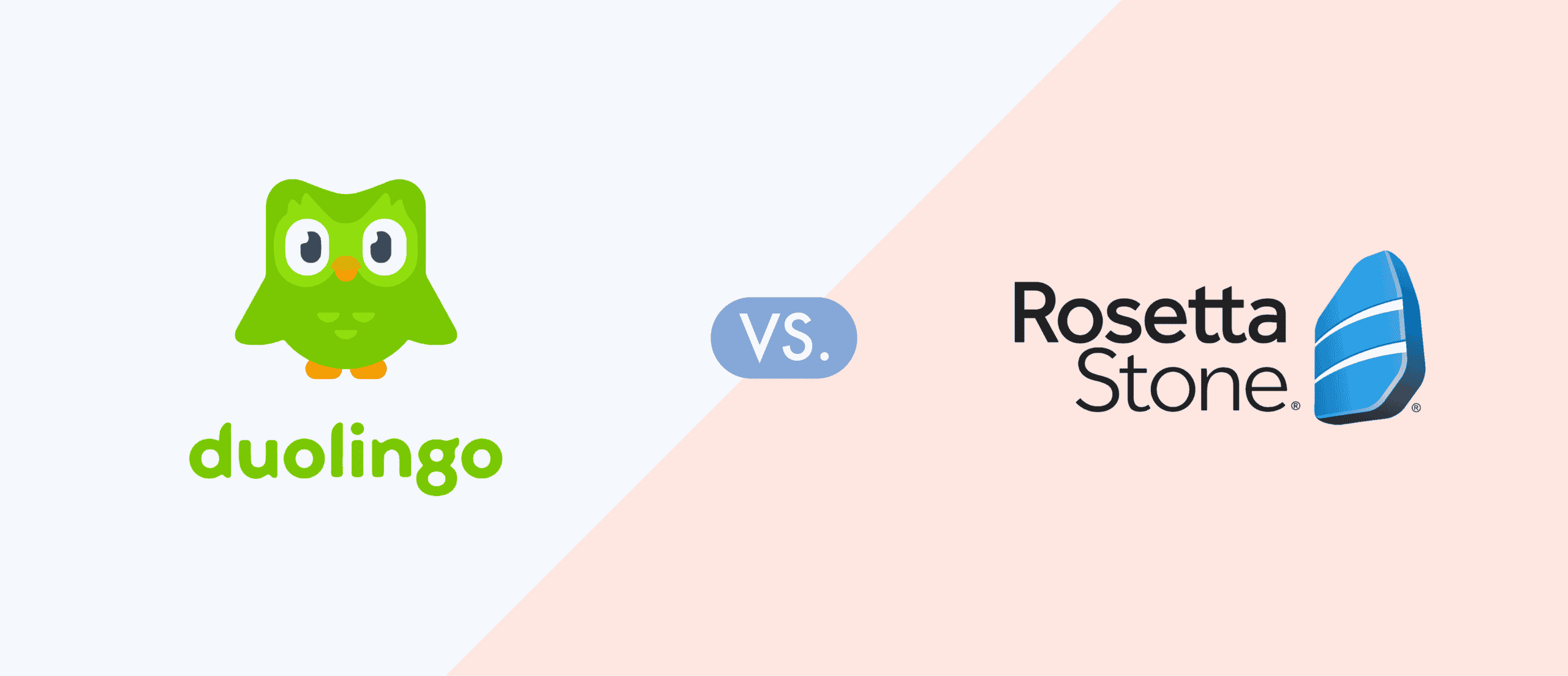Rosetta Stone vs Pimsleur
Updated: 03. Mar, 2023
While looking for the best app to learn a new language, you must have come across Rosetta Stone and Pimsleur. One of the biggest challenges people face when learning a new language is deciding which language app to choose. Both language learning programs have the goal of helping learners understand the basics of a new language. In addition, they are effective in their teaching method. However, some key differences exist between making each a good option for different learners.
Which language app is better? Well, it depends on your language goal and what you want to achieve. Comparing these apps is hard since they teach languages using different teaching methods. However, in this comparison guide, we have highlighted the similarities and differences between Rosetta Stone and Pimsleur.
Rosetta Stone Overview
No language learning app compares to Rosetta Stone regarding software development for language learners. Rosetta Stone was founded in 1992 and teaches about 25 languages to millions of people worldwide. The app is designed with cutting-edge language, brain fitness, and literacy software.
The language learning app is straightforward to use with really appealing visuals. The app prepares you to handle everyday interaction through a series of lessons ranging from basics to real-life situations. Rosetta Stone’s teaching method immerses you in the new language immediately. For example, the app displays a phrase and a photo, and you must figure out what the phrase means.
This can be discouraging, especially if you have no basic knowledge of your target language. However, you can always switch or enable the language translation if you get stuck on the app. In addition, Rosetta stone improves reading, listening, speaking, and writing language skills. For example, its voice recognition software can compare your pronunciation to native speakers; you must sound the same if you want to continue. This may sound complicated, but Rosetta Stone believes that people can only achieve fluency through total and intensive immersion.
The exercises on Rosetta Stone are called ‘seek and speak’ and are designed to help you improve your skills. It is like a video game where you take a quick quest before facing the boss. These exercises are also available offline.
Also, when you sign up, you gain full access to different materials and an extensive phrasebook. The phrase book comprises various categories such as health, safety, meeting people, etc. One of the most valuable features of Rosetta Stone is the stories to read, listen to, or even record yourself reading out loud. Finally, if you subscribe to Rosetta Stone’s paid version, you can always log in to take a live one-on-one class with language experts. You can also attend any group language coaching classes.
Pimsleur Overview
If you think Rosetta Stone has great content, the Pimsleur language learning app will make you rethink. Pimsleur language app was released in 2018 with the goal of teaching learners how to interact with native speakers. Pimsleur is a dynamic, engaging, and user-friendly app with much exciting content and challenging exercises.
Unlike other language learning apps, Pimsleur lessons are about 30 minutes long. On Pimsleur, you can only continue with other lessons once you correctly complete at least 80% of the lessons. The lessons and other activities include reading lessons, digital flashcards, speed games, and speak-easy exercises. On this app, you can connect your target language’s history and culture to your learning.

On Pimsleur, you download the lessons and have the option to complete them anywhere and anytime. However, if you are on Pimsleur’s free trial, you only have access to one free lesson for each language you choose. Pimsleur offers 51 languages with 60 to 150 lessons for each language for subscribers only. After each lesson, you can also take up some exercises to practice what you’ve learned.
However, unlike other language learning apps focusing on words and grammar, Pimsleur focuses on real-life situations. There is a hands-free option to use when doing something else, such as cooking, driving, or even in the gym. As stated earlier, Pimsleur aims to improve your reading skills, so you can always practice your reading, listening, and writing skills.
What are the Similarities Between Rosetta Stone and Pimsleur?
Besides being two popular names in the world of language learning apps, there are many similarities between Rosetta Stone and Pimsleur. Here are what they have in common.
Languages Offered
Rosetta Stone and Pimsleur teach many languages. Rosetta Stone offers about 25 languages to learners. Pimsleur offers over 50 languages for learners. Languages you can learn with these language-learning apps include Arabic, Greek, Spanish, French, German, etc.
Similar Learning Levels
Rosetta Stone and Pimsleur offer beginner, intermediate and advanced levels. Whether you’re a total beginner or just want to brush up on your foreign language speaking abilities, they have something to offer every learner. The advanced level is more like a revision that encompasses everything you have learned. Unfortunately, both apps will not make you 100% fluent in the languages.

Structured Lessons
Both language learning apps have a good content design in their courses. The concepts logically build upon each other, and there are several opportunities to review everything you have learned. Therefore, they offer better lessons than other learning resources in guiding your language journey. However, they have flaws that you will need to complement with additional learning resources.
Grammar is Ignored
Both Rosetta Stone and Pimsleur seem to ignore grammar in their lessons. Of course, it’s impossible for Rosetta Stone to teach grammar because everything is taught with pictures. However, Pimsleur focuses on other aspects of language learning, such as learning to converse with native speakers. As a beginner, you probably don’t need to worry so much about grammar. However, as you proceed to higher levels, you can look for other resources to work on language grammar.
Repetition
Both language apps teach languages by making you repeat words or phrases. The lessons are similar for all levels, and you might find yourself repeating the exact words. For Rosetta Stone, pictures are constantly dropping with captions over and over for most lessons. However, for Pimsleur, the lessons are repeated but certainly active. Since there is more speaking on Pimsleur, repeating can be bearable as you can form your sentence.

What are the Differences between Rosetta Stone and Pimsleur?
Although there are several similarities between Rosetta Stone and Pimsleur, there are certainly some key differences between the two apps. Even though they are popular language learning apps, they have different teaching methods.
Use of English
Lessons in Rosetta Stone are taught in the language of your choice. Rosetta Stone uses images and texts written in the target language. Having all the courses taught in your target language might be challenging initially, but you will get the hang of it eventually. In addition, learning a new language without translation can boost your ability to retain everything you have learned.
Pimsleur has many translations and uses English to make you say different things during classes. English is a mandatory language while learning with Pimsleur. In addition, if you do not understand a word in your target language, you can get the explanation in your registered native language or English.
So, it is a common learning practice on Pimsleur where you listen to a word in your target language, mother tongue, or English and repeat it. However, this can be a major hindrance to your improvement as you might get used to having translations.
Auditory Lessons
It’s no surprise that Rosetta Stone does not include any translation since the lessons depend on visual cues. Rosetta Stone’s exercises involve matching words or phrases to illustrated pictures. Rosetta Stone’s main method of teaching is written language.
However, this doesn’t mean that the app won’t help improve your listening and speaking skills. Besides picture matching, they have a lot of exercises with speech recognition software to improve your language skills. However, when compared to Pimsleur’s teaching style, oral teaching isn’t pronounced as heavily as on other apps.
Pimsleur is more of an audio resource. It’s a fantastic technique to pick up a language while you’re on the move. Hence, when learning with Pimsleur, you learn by listening. Exercises and lessons on Pimsleur require reading, listening, and speaking. When you listen to the audio lessons, you repeat after the host and will need to put together sentences with words you learned earlier. Pimsleur’s lesson style forces you to participate actively by using what you have learned and actually get to speak the language.
Lesson Style, Structure, and Length
Pimsleur’s teaching approach is purely audio-based. The app uses different words and phrases in your target language, and you must repeat them. Each language course consists of 30 lessons, which take about 30 minutes to complete. However, languages such as Hungarian come in a shorter length.

The teaching system is almost entirely audio-based, with a small part of the course involving writing and reading. However, some languages on the app include reading materials you should look at when listening to the audio lessons. This teaching method is quite effective as it encourages you to learn your target language through audio. In addition, the audio lessons help improve pronunciation.
On the other hand, Rosetta Stone focuses on picture illustrations and the audio teaching method. For most of the lessons, you will see a collection of pictures with words, phrases, or sentences. Then, a native speaker speaks the audio in your choice of language, and you have to identify or repeat it afterward. This Rosetta Stone method of learning is called Dynamic Immersion.
The courses are designed this way so that you can match words with pictures to help you understand the language better. You will learn the meaning of words and how well to pronounce them. Rosetta Stone teaches all language lessons in your target language, which gives room for a quick and better understanding of the language.
Each lesson has several exercises and activities such as writing, spelling, and speaking exercises. You can also recreate a real-life scenario in your target language. For Rosetta Stone, the length of any lesson varies depending on how quickly you learn. However, each lesson will take 5 to 30 minutes to complete.

Inclusion of Cultural Knowledge
Learning a new language requires diving into the culture. Having a strong cultural knowledge of a particular language can significantly improve your proficiency in that language. Some words are culture-specific, and if you do not understand the culture, you might not be able to understand these words.
Most language learning apps offer different languages but struggle to include the cultural aspects of these languages. Besides the videos for some languages, Rosetta Stone completely ignores culture in their courses. The words, phrases, and images they teach are almost identical for every language. Although it might not seem important to learn about the culture of your target language, doing so is fun and keeps you motivated.
Pimsleur does a better job by including culture in their courses. Although most of the lesson seems similar for each language, there are parts related to your target language’s culture. There is always extra information about the culture of your target language and how you can refer to it. This is an added benefit for any language learner whose goal of learning a new language is traveling to the country.
When traveling, you need basic knowledge of words and phrases that can come in handy. This extra information about your target knowledge’s culture adds to your basic knowledge. Learning a thing or two helps you mix in the community pretty well.
Rosetta Stone vs. Pimsleur Pricing
Rosetta stone offers plans for three months, twelve months, and lifetime options. The monthly plan for Rosetta Stone costs $35.97 for three months and $143.88 if you wish to subscribe for 12 months. The lifetime subscription costs $299, which gives you unlimited access to all Rosetta Stone language courses. Rosetta Stone offers a subscription with the option to include a live tutor. In addition, the minimum amount of time you can subscribe is three months.
Rosetta Stone has a 30-day money-back option if you do not like the outcome and decide to cancel your subscription. Also, subscribing to Rosetta Stone with a tutor costs $43 per month for 3 months. You can also pay $41 per month for a six-month subscription and $32 per month for a 12-month subscription.
On the other hand, Pimsleur offers two subscription tiers depending on the choice of language. The first subscription option costs $14.95, which gives you access to all levels. However, you can only learn one language at a time. You also gain access to other features such as the ability to install on up to four devices and driving mode.
The premium subscription costs $19.95 and includes all the basic plan features with other features. These features include flashcards, speak-easy exercises, quick match lessons, speed games, and lightbulb moments. Pimsleur also offers a 7-day free trial.
Conclusion
Picking between Rosetta Stone and Pimsleur depends on what language skills you plan to achieve. Both apps will help you learn any language, but Pimsleur offers more languages at a more affordable price. In addition, while Pimsleur teaches audio lessons, Rosetta offers visual learning methods with gamified lessons. There are a lot of differences between Rosetta Stone and Pimsleur that serves a different purpose for different learners. However, combining with other learning resources can give the best result.
Rosetta Stone vs Pimsleur – FAQ
How long does it take to learn a new language with Pimsleur?
Learning a language with Pimsleur can take 12 to 44 weeks. Although, this depends on the kind of language you wish to learn.
Can I learn multiple languages on Rosetta Stone?
Rosetta Stone gives you access to learn the language registered on your account. You can decide to learn 10 languages and switch back and forth among the languages. You can always save your progress so you can always get back to any language.
Can Rosetta Stone and Pimsleur make you fluent?
Rosetta Stone will teach you the basics to intermediate level, but fluency is not attainable with Rosetta Stone. Also, you cannot become fluent in your target language with Pimsleur. However, using Rosetta Stone and Pimsleur can greatly improve your language skills.
Table of contents
Read more
Duolingo vs. Busuu
The benefits of language learning extend beyond pure fun. It may be quite helpful in many facets of your li...
READ ARTICLE
Duolingo vs. Memrise
Making life decisions can be tough. Choosing between Duolingo and Memrise for your language learning journe...
READ ARTICLE
Duolingo Vs Rosetta Stone
As new language speakers will testify, learning a new language can be thrilling and super-exciting. But tha...
READ ARTICLE



